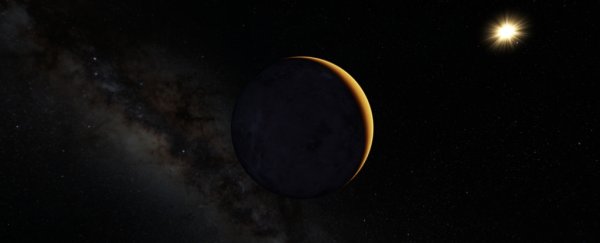We can't all go to space, but we can now take a poke around our Solar System thanks to Google Maps.
The internet giant's mapping service has expanded its map of the nearby celestial bodies to include three new planets and a whole bunch of new moons to explore. And it's even more awesome than it sounds.
Previously, the service had only included Earth, of course, along with Mars, the Moon, and the International Space Station, with data collected from the NOAA, the ESO, JAXA, NASA, and in the case of the ISS, astronaut Thomas Pesquet, who captured data for Street View.
Now we have Venus, Mercury, Pluto and the moons Ceres, Io, Europa, Ganymede, Mimas, Enceladus, Dione, Rhea, Titan and Iapetus to explore, thanks to NASA data.
You won't be able to get as up close and personal with these planets as you can with Street View, since we don't have surface-level photographs, but you can spin them around, and have a good zoom in on things - like a nice virtual globe.
"Explore the icy plains of Enceladus, where Cassini discovered water beneath the moon's crust - suggesting signs of life," Google Street View product manager Stafford Marquardt wrote in a blog post.
"Peer beneath the thick clouds of Titan to see methane lakes. Inspect the massive crater of Mimas - while it might seem like a sci-fi look-a-like, it is a moon, not a space station."
Image data was collected together from several NASA and ESA missions, including Cassini, which collected a lot of information and photographs of Saturn and its moons. Pluto data was taken from New Horizons, so a lot of it is pretty blurry, but the detail on the Sleipnir Fossa and the Morgoth Macula is breathtaking.
Mercury was examined in detail by Messenger between 2011 and 2015, and Google credits mapping companies Orion Map Data and AfriGIS for Venus data.
Some of this data was compiled into maps by astronomical artist Björn Jónsson, whose website is really fun to poke around in.
There are a few planets missing. For all the Cassini data used, the new lineup has a rather glaring omission - Saturn, the ringed planet. Jupiter also has a probe, Juno, busily collecting data, so maybe we'll see the gas giants join the collection sometime.
We don't have probes checking out our ice giants, Neptune and Uranus, but NASA is hoping to get some out there eventually. Given how long the trip to those reaches of the solar system takes, though, they probably won't join the Google Maps fun for at least another decade.
In the meantime, though, there's plenty for you to explore. You can check it all out on Google Maps' handy space page.
Or you could go for space and time with the TARDIS, Google Maps style.
